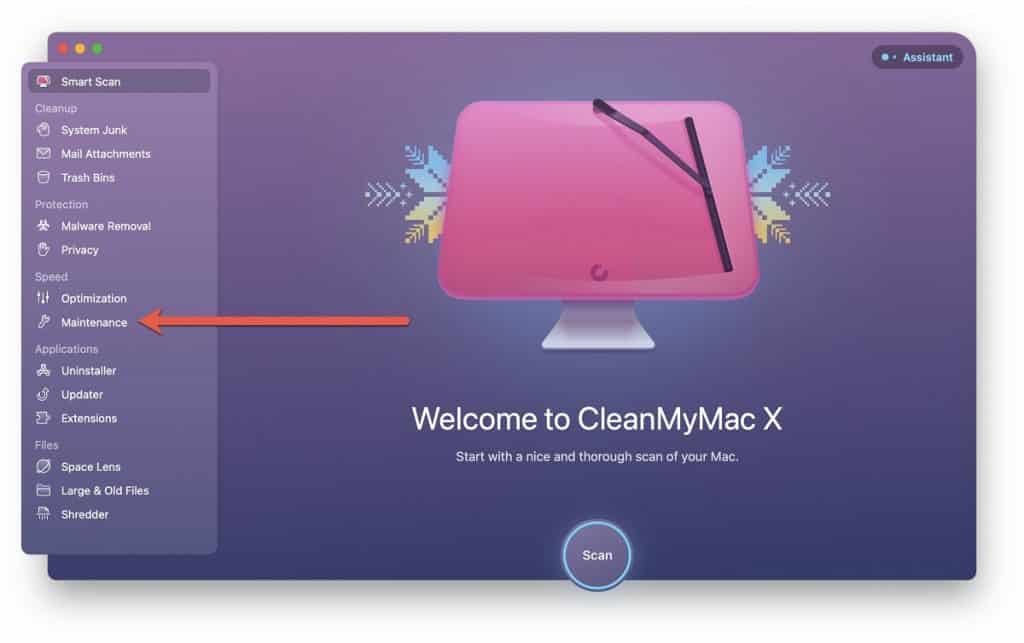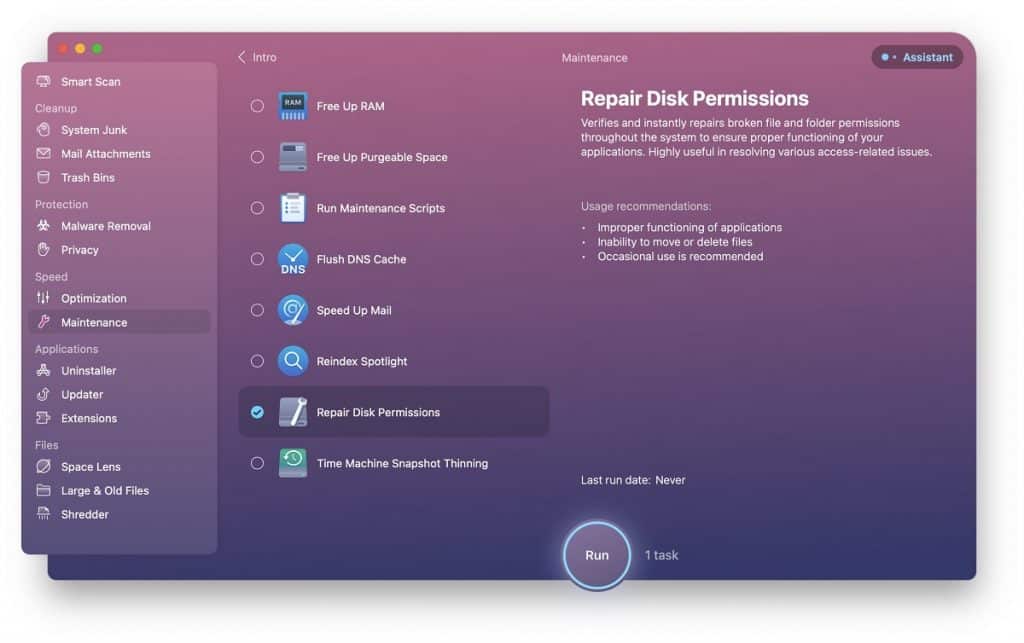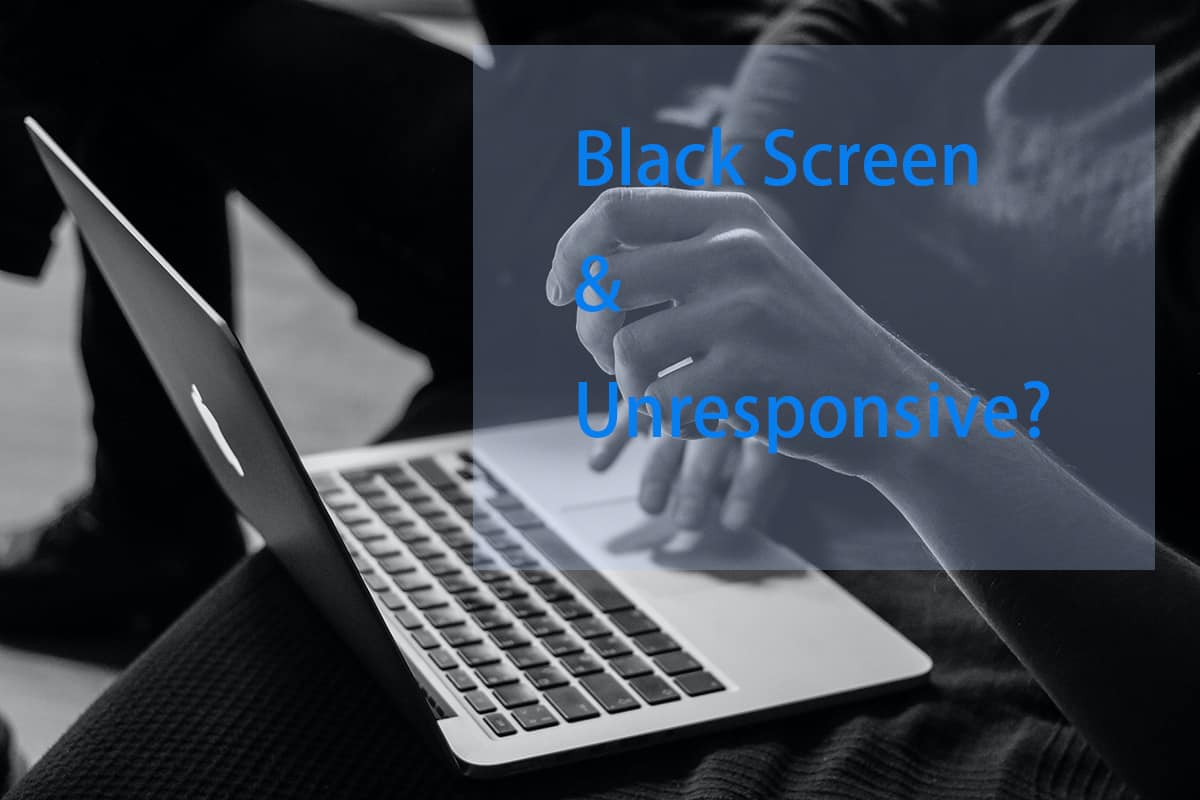A worrying number of MacBook owners have either experienced or are currently experiencing issues with their screen going black and becoming unresponsive.
This problem, often called the MacBook black screen of death, has several potential causes, and we describe all of them in this article, together with multiple solutions that you can try to fix the problem at home.
Why Did Your MacBook Screen Go Black?
If you’re wondering, “Why did my Mac screen go black?” we have bad news for you: we can’t give you a clear answer because there are many possible causes of this annoying issue. For the sake of simplicity, we can group them into the following two categories:
- Software issues: MacBook black screen of death causes that belong in this category are all software related, and they include configuration issues, operating system bugs, faulty updates, and so on. Software issues can almost always be fixed at home using the solutions described in the next section of this article.
- Hardware issues: Your MacBook screen can also go black when there’s something physically wrong with your laptop. For example, some earlier MacBooks suffer from the so-called flexgate issue. This issue is caused by a faulty flex cable, and its main symptom is the screen going black. Unfortunately, hardware-related causes of the MacBook black screen of death can’t be fixed at home unless you know exactly what you’re doing and have the right equipment.
Since it can be difficult to troubleshoot the cause of the MacBook black screen of death problem without access to the right diagnostics equipment, we recommend you try the solutions below in the order in which they are described. If none of them makes your screen responsive again, then it’s time to take your MacBook to Apple or an authorized service.
How to Fix a Black and Unresponsive MacBook Screen
You don’t need to be an expert to fix a black and unresponsive MacBook screen. You just need to follow the instructions below. Don’t get discouraged if the first few solutions don’t solve the problem. There’s a good reason why we describe so many of them.
Solution #1: Increase Your Display Brightness
You’ve probably tried this solution already, but we feel this article wouldn’t be complete if we didn’t mention it.
The brightness of your MacBook screen can go down all the way to 0%. At that point, the screen becomes completely black. To increase its brightness, you need to press F2 on your keyboard. If that doesn’t work, try fn + F2.
Solution #2: Check Your Power
Your screen won’t turn on unless it’s getting the power it needs. Since you can’t see your battery charge percentage without your screen working, you should start by connecting your MacBook to a charger.
Some MacBooks have a charging indicator light to tell you that your laptop is receiving power. If your MacBook doesn’t have one, then you can use an electricity usage monitor to see how much power your charger is drawing from the outlet.
If your MacBook remains unresponsive even after an hour or so of charging, then something may be wrong with the charger, the cable, or the laptop itself. At that point, you can try another charger and cable or let experts take a look at your MacBook.
Solution #3: Unplug All Accessories
MacBooks are picky when it comes to accessories. A poorly made third-party docking station or dongle can make your laptop behave in unexpected ways. That’s why you should unplug all accessories and test the screen again before moving forward.
For example, one user only notice that his MacBook Pro screen goes black when fully opened. Initially, they expected the flexgate issue to cause the problem. Eventually, they realized that unplugging their USB-C to USB-A dongle caused the screen to turn on again—problem solved.
Solution #4: Restart Your MacBook
The humble restart has solved more IT issues than any IT professional, and there’s a good chance that it can fix the MacBook Pro black screen of death or the MacBook Air black screen of death as well.
To restart your MacBook without the screen working properly:
- Macs with Touch ID: Press and hold the Touch ID button until your MacBook restarts and you see the Apple logo.
- Macs without Touch ID: Press Control + Command + Power to force your Mac to restart without prompting to save any open and unsaved documents.
Solution #5: Reset SMC and PRAM/NVRAM
Intel-based MacBooks come with the System Management Controller (SMC), Parameter Random Access Memory (PRAM), and Non-Volatile Random Access Memory (NVRAM).
SMC controls everything from video mode switching to sleep and wake, while PRAM and NVRAM are used to store system settings.
Sometimes, SMC and PRAM start misbehaving and causing all kinds of issues, such as the MacBook black screen of death. Fortunately, resetting them is fairly straightforward.
To reset SMC:
- Shut down your MacBook.
- Press and hold Control + Option + Shift.
- Keep holding all three keys for 7 seconds.
- Press and hold the power button as well.
To reset PRAM/NVRAM:
- Shut down your MacBook.
- Turn your laptop on and immediately press and hold Option + Command + P + R.
- Release the keys after about 20 seconds.
Solution #6: Boot Into Safe Mode
A single poorly written app can make your MacBook unusable, especially when it’s set to start after boot automatically. In such situations, you can boot into Safe Mode, a special start-up mode that prevents some software from loading and performs a check of your startup disk.
To boot an Apple silicon MacBook into Safe Mode:
- Shut down your MacBook.
- Press and hold the power button until you see the “Loading startup options” message.
- Select your macOS volume.
- Press and hold the Shift key before clicking the Continue in Safe Mode option.
To boot an Intel-based MacBook into Safe Mode:
- Shut down your MacBook.
- Turn on your MacBook and immediately press and hold the Shift key until you see the login window.
- Log in to your Mac.
Solution #7: Check & Repair Disk Permissions
macOS implements a robust system of permissions for files, folders, and disks that prevent unauthorized users and applications from accessing resources they’re not supposed to access.
Sometimes, macOS permissions can become messed up and prevent applications and the operating system from working as intended.
To fix them, you can use a tool like CleanMyMac X:
Step 1. Download, install, and launch CleanMyMac X.
Step 2. Select the Maintenance category from the left pane.

Step 3. Click the View All 8 Tasks button.
Step 4. Select Repair Disk Permissions.
Step 5. Click Run.

Further Reading: Best Mac Cleaner
Solution #8: Reinstall macOS
Has none of the above-described methods fixed the MacBook black screen of death? Then it might be time to try the nuclear option: reinstalling macOS.
If you follow the instructions on Apple’s support page, you can reinstall macOS without removing your data from your Mac.
Still, we highly recommend you back up all important data because you never know when something decides to go wrong.
FAQs
- 1. What is the MacBook black screen of death?
The MacBook black screen of death is an issue that causes the MacBook Pro screen to go black when fully opened due to a known design flaw. The term also refers to all other issues with the built-in screen becoming unresponsive.
- 2. Why does my Mac go black out of nowhere?
The cause of your Mac going black out of nowhere can be software-related, but it can also be a symptom of battery or display damage.
- 3. How do you force restart a MacBook?
To force restart a MacBook, you need to press and hold the Touch ID button until your MacBook restarts, and you see the Apple logo. Alternative, press Control + Command + Power if your MacBook doesn’t have the Touch ID button.
- 4. Do Apple silicon MacBooks have SMC and PRAM/NVRAM?
No, Apple silicon MacBooks are based on the same architecture as iPhones and iPads, and they don’t have SMC and PRAM/NVRAM.
- 5. Does the MacBook black screen of death affect M1 and M2 Macs?
Your MacBook screen can go black for many different reasons, including the so-called flexgate issue, a manufacturing defect affecting some older models of the MacBook Pro. Fortunately, M1 and M2 Macs are not affected by it.
Seeing your MacBook screen suddenly go black and become unresponsive can be frightening, but the situation is usually not nearly as bad as it may seem at first. The solutions described in this article are easy to implement and can save you a trip to your nearest Apple store.



